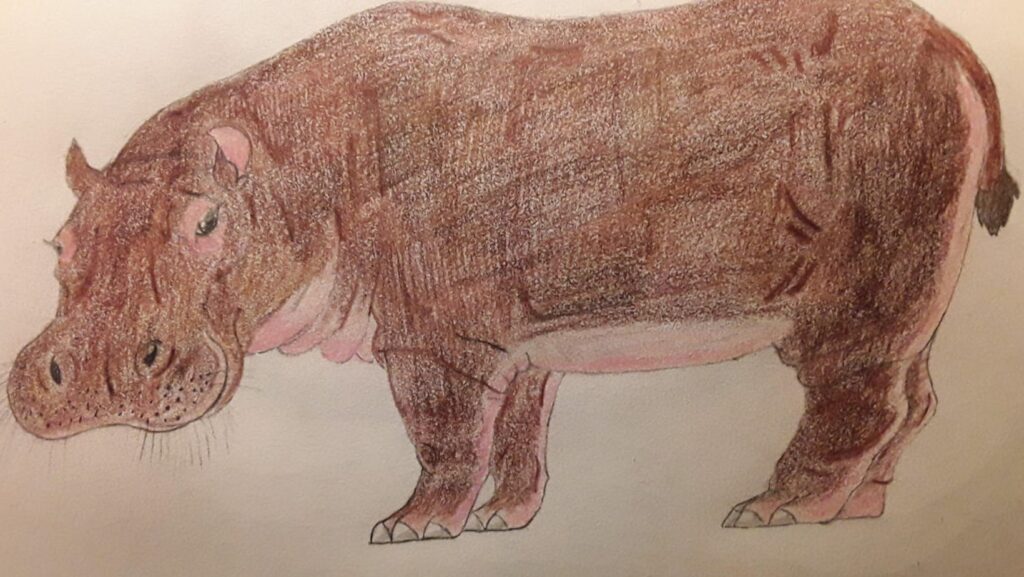Capturing the essence of a hippo on paper can be both a delightful and rewarding experience for artists of all levels. With their unique features and playful nature, hippos present an exciting challenge that encourages creativity and attention to detail. Whether you’re a seasoned artist or just starting out, drawing a hippo offers a chance to explore new techniques and expand your artistic skills.
Drawing:sb1syh8a_j4= Hippo

Drawing a hippo involves capturing its distinctive features. Hippos have round bodies, short legs, and large mouths, which require attention to detail. Starting with simple shapes can help guide the drawing process. Circles for the body and head define the hippo’s form.
Proportions are essential when drawing a hippo. The head should be relatively large compared to the body, and the legs short but sturdy. Observing these sizes ensures the drawing captures the hippo’s unique silhouette.
Facial features add expression to the hippo drawing. Emphasizing the eyes and ears enliven the character. Hippos often have small, rounded ears, which contrast with their large mouths, creating a balanced facial structure.
Incorporating texture enhances a hippo drawing’s realism. Short, curved lines indicate the rough skin and folds. Observing real hippos provides insight into these textural elements, essential for a detailed depiction.
Step-By-Step Guide To Drawing:sb1syh8a_j4= Hippo

Drawing a hippo involves followable steps to capture its unique features effectively. Start by sketching a large oval for the hippo’s body and a smaller circle above for the head. Connect these shapes with slightly curved lines to form the neck. Ensure the head remains proportionally larger than the body for accuracy. Next, draw short rectangles for each leg, remembering that hippos have thick, sturdy limbs. Add circles at the base of the legs for the feet.
Focus on the hippo’s facial elements. Draw two small circles for expressive eyes and place them near the top of the head. Sketch semi-circles for ears above the eyes, giving them a rounded appearance. Create a wide mouth below the eyes, using a slightly curved line to show the jaw.
Enhance the realism by adding texture. Use short, curved lines to depict the skin folds along the body and limbs. Finally, refine the outlines, erase unnecessary guidelines, and add shading to provide depth to your hippo drawing.
Tips And Tricks For Drawing:sb1syh8a_j4= Hippo

Achieving a lifelike hippo drawing involves focusing on several key aspects. Attention to detail in the hippo’s skin texture adds depth. Artists can use a series of short, overlapping lines to replicate the rough and wrinkled skin typically seen on these creatures. Incorporating shading enhances the three-dimensional effect, highlighting the massive body and distinguishing between light and shadow.
Capturing accurate proportions between the head, body, and limbs is crucial. The head should appear slightly larger, with the body taking on an oval shape. Hippos have short, sturdy legs, which should be reflected in the drawing. Paying close attention to the ears and eyes will contribute to expressing the hippo’s uniqueness.
For further realism, including the surrounding habitat elements like water and grasslands can enrich the drawing. Observing reference images of hippos in their natural environment helps in understanding natural postures and movements, providing a more dynamic outcome.
Common Mistakes And How To Avoid Them
Aspiring artists might encounter several common pitfalls when drawing hippos. One frequent mistake is neglecting the proportions between the head and body, which can disrupt the overall balance of the drawing. To avoid this, artists should regularly step back and assess their work from a distance. Another issue is underestimating the intricacies of a hippo’s skin texture. Overly smooth lines can make the drawing appear flat, so it’s essential to use short, overlapping lines for a more authentic look.
Additionally, some artists might overlook the importance of shading. Without proper shading, the drawing can lack depth and dimension. Practicing different shading techniques can help bring the hippo to life. Lastly, ignoring the natural environment of hippos can result in a less engaging piece. Including elements like water or grasslands not only enhances the drawing but also provides context and realism. By being mindful of these aspects, artists can create compelling and lifelike hippo drawings.

